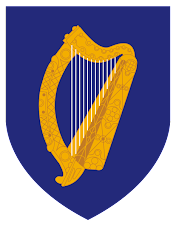 Several hours have now passed since my last post. After staying up all night, analysing and commenting as events were unfolding, I allowed myself a few hours of rest.
Several hours have now passed since my last post. After staying up all night, analysing and commenting as events were unfolding, I allowed myself a few hours of rest.Returning to the computer I noticed that my earlier prediction came through and the Democrats are now also in full control of both Houses of the United States Congress.
 Meanwhile 427 of the 435 congressional districts that elect the members of the House of Representatives (where the majority is 218) have declared a result. 254 Democrats and 173 Republicans have been elected.
Meanwhile 427 of the 435 congressional districts that elect the members of the House of Representatives (where the majority is 218) have declared a result. 254 Democrats and 173 Republicans have been elected.This means that so far - with another 8 districts to declare - the Democrats have increased their 2006 majority (of 233) by another 21 seats, while the Republicans have so far lost 29 seats compared with the 202 they held in the last Congress.
 In the Senate 33 (of the 100) seats were up for election, and with four results - from the states of Alaska, Georgia, Minnesota and Oregon - still pending, the Democrats have extended their 2006 majority (of 51) by another five Senators to now 56, while the Republicans have just 40 confirmed Senators in the new Congress.
In the Senate 33 (of the 100) seats were up for election, and with four results - from the states of Alaska, Georgia, Minnesota and Oregon - still pending, the Democrats have extended their 2006 majority (of 51) by another five Senators to now 56, while the Republicans have just 40 confirmed Senators in the new Congress.Going by the currently available numbers, it looks as if three of these four Senate seats (from Alaska, Georgia and Oregon) will go to the Republicans, while the result of the Senatorial election in Minnesota will be recounted.
 In the first count the incumbent Republican Senator Norm Coleman (right) polled 1,211,632 votes, while his Democratic challenger Al Franken (below left) received 1,211,167 votes.
In the first count the incumbent Republican Senator Norm Coleman (right) polled 1,211,632 votes, while his Democratic challenger Al Franken (below left) received 1,211,167 votes.  This gives Coleman a narrow lead of only 435 votes, while a third candidate - the independent Dean Barkley - polled a total of 437,377 votes.
This gives Coleman a narrow lead of only 435 votes, while a third candidate - the independent Dean Barkley - polled a total of 437,377 votes.According to political sources in Minnesota, it "could take until December" before the final result for this contest is verified.
As things stand, this means that the Democrats will have a comfortable majority in the Senate, as well as in the House, but will not reach the 60 Senators needed for an absolute control, which could overrule so-called 'filibuster' actions (where a single Senator from either side could block a decision by non-stop talking for hours and hours). This rarely used arcane practice, modelled on a similar tradition in the Senate of ancient Rome, still exists in the USA, whose political system is still the same as it was when the Republic was founded in 1776.
In the presidential election, which was well and clearly won by Senator Barack Obama shortly before 4 am GMT, three states - Indiana, Missouri and North Carolina - had not declared a result by the time I last reported on it here. All three are so-called 'battle-ground states' and were won by George W. Bush with clear majorities four years ago. But this time the results in all three are extremely narrow, which means recounts and clarifications before a final result can be published.
Meanwhile Indiana has declared, and its eleven votes in the Electoral College go to Barack Obama, who won the states with 1,367,264 (or 50%) of the votes, while John McCain received 1,341,101 (or 49%). This result shows how hard the campaign was fought, and how close to each other win and loss can be. In Indiana's case the winning margin was 26,163 votes.
While I write this, counting and re-counting is still going on in Missouri and North Carolina. Without these two last undeclared states, the balance in the Electoral College stands now at 349 for Barack Obama to 163 for John McCain.
According to the available numbers Barack Obama has a lead of 13,093 public votes over John McCain in North Carolina, while McCain has still a lead of 5,868 public votes over Obama in Missouri.
Republicans have carried North Carolina in nine of the last ten presidential elections, usually by comfortable margins. George W. Bush won the state by a 13-point margin in 2000 and by a 12-point margin in 2004.
Missouri is the USA's ultimate bellwether in presidential elections. It has voted for the winning candidate in all but one presidential election for the last 100 years. George W. Bush carried the state twice, most recently in 2004 by a comfortable 7-point margin.
Should there be no new developments, it looks as if North Carolina with 15 electoral votes will be won by Barack Obama, while Missouri with 11 electoral votes will go to John McCain. That would bring the balance in the Electoral College to a final result of 364 to 174.
Even though the President is elected by the members of the Electoral College, which represent the 50 states, the public vote is always a good indicator for the overall tendency of the electorate. Looking at the numbers of the public vote, they give the same message as the numbers for the Electoral College.
Barack Obama received 63,685,576 public votes (or 53%) nationwide, while 56,280,666 people (or 46%) voted for John McCain. This means that Ipsos is the only of the 12 main polling organisations that got the result exactly right, while several others came close.
Interesting also is the high turn-out for the elections, which was 64%, the highest percentage in an election since 1960, when the Democratic Senator John F. Kennedy was elected President in a similar public surge for change as we saw it yesterday.
The Emerald Islander
Republicans have carried North Carolina in nine of the last ten presidential elections, usually by comfortable margins. George W. Bush won the state by a 13-point margin in 2000 and by a 12-point margin in 2004.
Missouri is the USA's ultimate bellwether in presidential elections. It has voted for the winning candidate in all but one presidential election for the last 100 years. George W. Bush carried the state twice, most recently in 2004 by a comfortable 7-point margin.
Should there be no new developments, it looks as if North Carolina with 15 electoral votes will be won by Barack Obama, while Missouri with 11 electoral votes will go to John McCain. That would bring the balance in the Electoral College to a final result of 364 to 174.
Even though the President is elected by the members of the Electoral College, which represent the 50 states, the public vote is always a good indicator for the overall tendency of the electorate. Looking at the numbers of the public vote, they give the same message as the numbers for the Electoral College.
Barack Obama received 63,685,576 public votes (or 53%) nationwide, while 56,280,666 people (or 46%) voted for John McCain. This means that Ipsos is the only of the 12 main polling organisations that got the result exactly right, while several others came close.
Interesting also is the high turn-out for the elections, which was 64%, the highest percentage in an election since 1960, when the Democratic Senator John F. Kennedy was elected President in a similar public surge for change as we saw it yesterday.
The Emerald Islander







































1 comment:
finally a political analysis without an overabundance of vehemant comments about americans as a whole. Perhaps you are learning. Also you might want to consider just posting your friends names rather than silicon pictures, might give more credibility to your writing unless of course you have a section for non readers or one with pictures.
Post a Comment